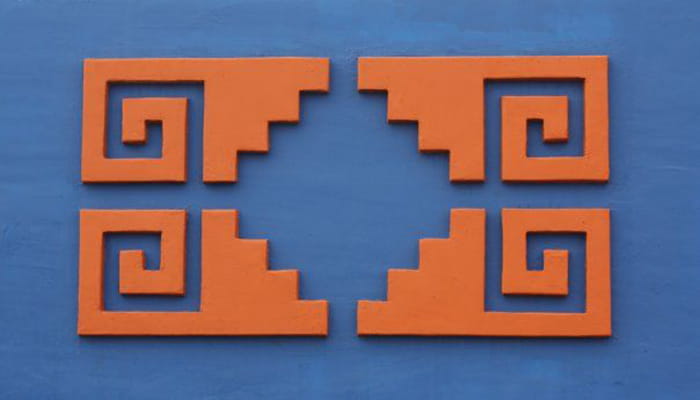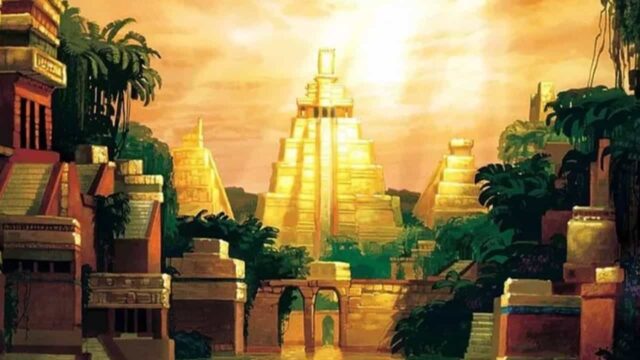Discover with us all the information about Inca symbolism, a collection of fascinating and ancient traditions.
All Inca symbolism has a meaning, a purpose, a goal, and a spiritual significance. The symbols can be used actively to meditate or to strengthen weak parts of the human being. In this article, some of the Inca symbols have been chosen and described.

This Inca symbolism is found in Inca architecture and artwork. It was also believed that when a person died, their soul went to the underworld and the puma would descend to the underworld to collect it. The condor would then take it to the upper world of the gods.
Others believe that the corners of the Inca Cross represent the values of Inca culture, such as love (munay), knowledge (yachay), and work (llankay), or the values established by the Inca Empire, such as respect and obligation to parents, the Inca ruler, and the gods.
2. Snake
The snake represented the beginning of a new life in Inca symbols, because the snake always emerges from secrecy, and Andean tradition says that life always begins in secrecy. Some other cultures believe that the snake also represents knowledge.
The 4 Most Popular and Interesting Mayan Myths
3. Diamonds
In Inca symbolism, diamonds are actually unique to Umasbamba textiles. Each community or region of weavers tends to have a symbol that represents or attributes the weaving to that community. It is like a kind of signature. In Umasbamba, the diamond shape is incorporated into the designs of the textiles that are woven and sold.

4. Red and white circles
The red and white circles on a textile represent the bulls from Inca symbols that are used to plow the land in many Andean villages, more specifically their footprints. As you travel to the countryside of Peru, you are likely to see a pair of bulls leading a wooden plow, an ancient technique that farmers in some of the smaller villages still use regularly today.

5. Smaller white and yellow circles
White and yellow circles embroidered on Inca textiles are represented by small white and yellow circles throughout the design, likely symbolizing the eyes of the llama, an incredibly important animal in Peruvian village life. Since Inca times, llamas have been used for their wool, meat, and ability to transport people and goods across Peru’s difficult mountainous landscapes.

6. An incomplete infinity sign
This shape is actually the Inca symbol for the chira, an agricultural tool that dates back to Inca times but also belongs to Inca symbolism. It was essentially a foot-held plow made from a long stick with a curved tip. The tool allowed farmers to break up the soil, aerate it, and sow their crops with the simple pressure of their foot on the tool. Some farmers in the Andes still rely on ancient Inca tools such as the one represented by this textile symbol.
The 4 Most Well-Known Roman Symbols and Their Meanings
7. Black Inca figures
The black figures on a textile within Inca symbolism represent the birds that farmers rely on to sound the alarm when there are foxes in the area. Farmers often let their livestock graze in the mountains without any supervision.

The song of these birds is what lets them know it’s time to return to their livestock quickly, before one of their precious sheep or llamas becomes lunch for a hungry fox.
This is just a sample of the many designs found in textile markets in Peru. For a truly special souvenir from your vacation in Peru, you can purchase a Peruvian textile directly from the weaver and discover which designs she chose to weave into the piece you are taking home.
8. Coca leaves (K’intu)
The leaves can be chewed for energy, healing, and inner visions. You can make tea with the leaves to counteract altitude sickness. In these moderate amounts, you will not be negatively influenced by coca leaves. Farmers chew coca leaves together with a small piece of lime ash to increase the stimulating effect because it not only decreases hunger, which is good for a society where food is scarce, but also stimulates the heart and helps farmers endure working at such high altitudes.

Tourists also chew many coca leaves and drink a lot of coca tea to get used to the altitude. The K’intu (k’een-tooh) is a group of three perfect coca leaves used to make an offering to the Natural Spirits in Pachamama. In Inca symbolism, the K’intu is a central element in a Despacho (gift offering) and is generally used three at a time.
9. The Flower of Life
The flower of life is a sacred Inca geometric symbol that shows the pattern of the universe and can be found in many religions and cultures around the world. It is one of the oldest sacred symbols known to man.

This flower of life has a deep spiritual meaning and is believed to include the pattern of creation that derives from the great gap or hole in the universe.
By meditating on this symbol with sacred geometry and wearing the Inca symbolism of the flower of life on your body, it is known to have strong healing powers, helping us to dissolve fear, connect with our higher self, and gain greater self-awareness, among other benefits.
10. Llama / Alpaca
The llama is also considered a sacred animal in Inca symbolism. The llama’s coat is frequently used, as is the case with its smaller cousin, the alpaca. Both are often seen in the Andes, but llamas are also used to transport water to islands without water supply systems. It is said that a llama can carry 25 kg. If more weight is placed on its back, the llama will simply stop.

Llamas are still used to transport goods and water up and down mountains. These animals, which feature in Inca symbolism, are still used to transport goods and water up and down mountains.

